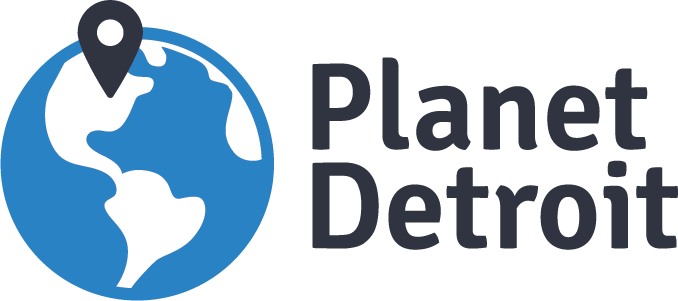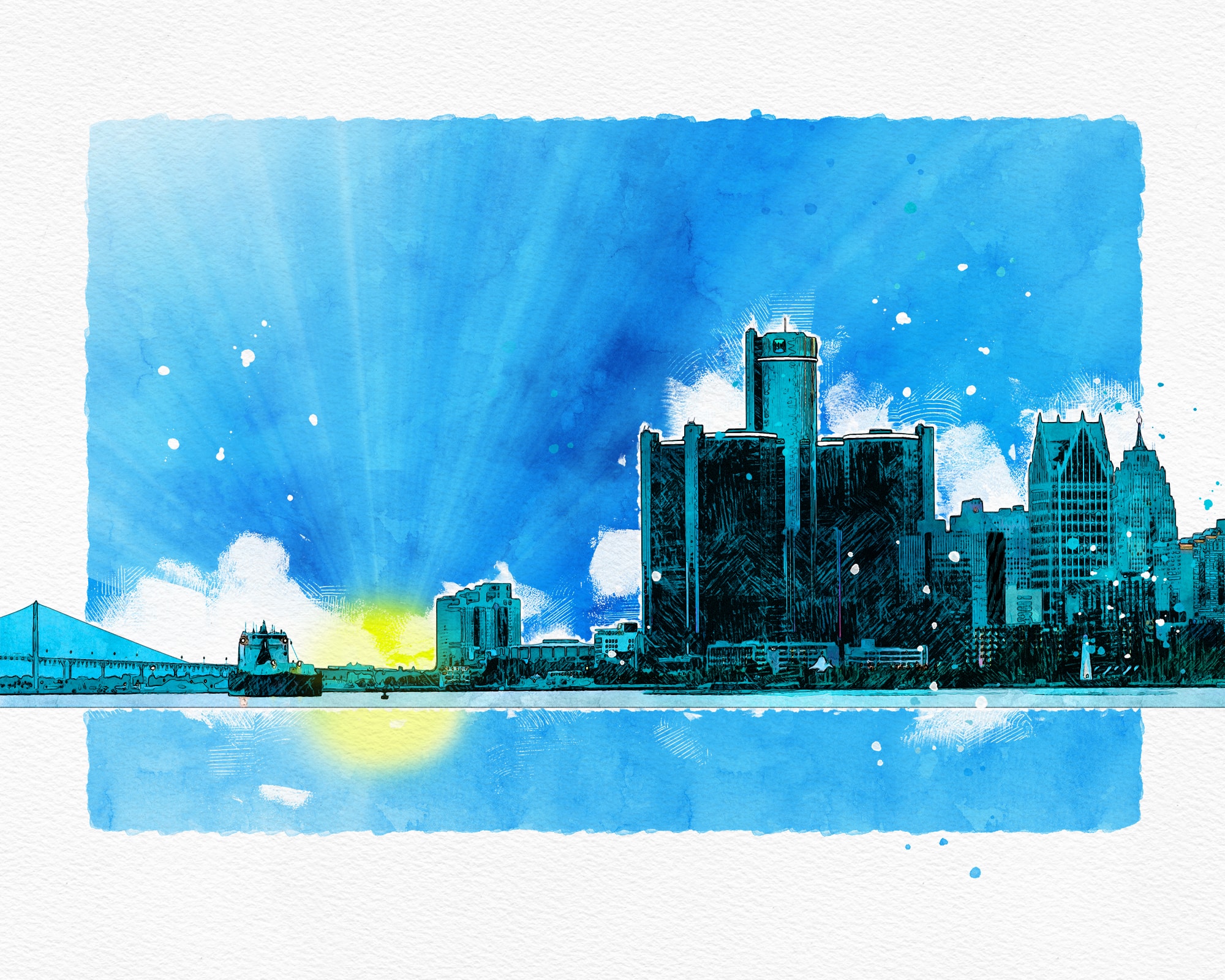Dear Planet Detroit,
What is being done about the water quality of Rouge River?
A River Person
Dear River Person,
Well, a lot! The Rouge River has come a long way since infamously catching fire in 1969 after a worker dropped a torch into the river, which ignited waste oil and other contaminants deposited by nearby industry.
The river was officially listed as an Area of Concern in 1987 under the U.S–Canada Great Lakes Water Quality Agreement. It met nine of the 14 impairment criteria, including restrictions on fish and wildlife consumption, beach closings, and eutrophication/undesirable algae, to name a few.
Since then, groups like the nonprofit member organization Friends of the Rouge and the municipal Rouge River Advisory Council have undertaken numerous projects to improve the river’s water quality.
Marie McCormick, executive director at Friends of the Rouge, said that the river’s water quality had improved immensely due to the extensive investment over the last 30 years. She told us the river is consistently meeting “partial body contact” standards — meaning the river is safe to kayak in — and even occasionally to swim.
McCormick cautions that she wouldn’t necessarily advise people to regularly swim in the Rouge River because it still receives many uncontrolled combined sewer overflows. There’s still work to be done.
“The Rouge River watershed contains the oldest and most heavily populated and industrialized area in southeast Michigan,” an EPA spokesperson for the told Planet Detroit. Contaminants that currently pollute the watershed include heavy metals, polychlorinated biphenyls (PCBs), polycyclic aromatic hydrocarbons (PAHs), mercury, oil, and grease — all of which affect fish and wildlife habitat and populations as well as recreational activities.
Below are just a few of the dozens of current projects clean up the Rouge River, including some projects you can get involved with to contribute yourself to water quality improvement efforts.
Habitat restoration
In May of 2020, the EPA awarded $1.8 million to Alliance of Rouge Communities for habitat restoration projects along the Lower Rouge River, such as removing invasive species and planting native species.
“Thanks to GLRI funding, we can expect to see decreased flooding and enhanced fish and wildlife habitat in the Rouge River watershed,” regional administrator and Great Lakes national program manager Kurt Thiede said in a press release. The department plans to add six acres of new wetlands, three acres of improved wetland habitat, five acres of native trees, and new native meadow habitat through the project.
In July, the Alliance of Rouge Communities received an additional $4.2 million grant from the EPA for 120 acres of restoration projects in five parks across the watershed. Wayne County Executive Warren C. Evans said in a press release, “The habitat will assist with eliminating degradation and debris jams and make our parks a conducive environment for its natural inhabitants.”
Dredging the Lower Rouge River old channel
Starting at the river’s mouth near Zug Island, a $50 million sediment remediation project funded by the EPA, Great Lakes Legacy Funds, Great Lakes Restoration Initiative, and the company Honeywell is underway. The effort will remediate PCB and mercury contamination in the sediment at the bottom of the river so fish can use it as spawning grounds.
While Honeywell wasn’t there when the contamination occurred, the company has stepped up to clean it up as community members in the neighborhood, McCormick told Planet Detroit.
“They’ve been an incredible example for some of the other industrial partners down in the lower Rouge because this wasn’t even their mess,” she said. “It’s a powerful example of corporate responsibility at its best.”
The Rouge Oxbow restoration project
After 20 years and multiple partners, the Oxbow restoration project next to Greenfield Village in Dearborn was recently completed. An oxbow is a horseshoe shape formation in a river that creates a secondary channel where the current slows down, creating aquatic habitat. In the Rouge, the oxbow was designed to offer a resting space for fish.
“That area was essentially like the Sahara Desert for the fish swimming upstream,” McCormick said. “There was nowhere to hide, to rest.”
It’s still a couple of years before the public will be allowed to access the oxbow, and McCormick asks that people respect the restrictions to enable the plants to grow before people walk around the property.
Henry Ford Estate dam fishway restoration
Often, if barriers like dams are in the way and fish can’t reach their destination, they cannot reproduce, and their population declines.
The EPA, Michigan Department of Natural Resources, Alliance of Rouge Communities, and others began construction in 2018 on an 800-foot naturalized channel that will allow fish to bypass the Henry Ford Estate dam. “It’s a really incredible project that will improve the habitat greatly for the fish in the river,” said McCormick.
This project will allow fish to continue their historic journey up the Rouge River to spawn by reconnecting 50 primary and 108 tributary miles.
Citizen science
Friends of the Rouge offers several science projects for community members to monitor insect populations around the Rouge. These humble organisms are important biological indicators of water quality.
“That data has been used to make decisions about when and where future restoration projects occur,” said McCormick. “It helps determine the success of the restoration project and whether or not it has helped improve the habitat in that area for the species we are targeting.”
To learn more about the projects and sign up, visit their website.
Resident action
Fifty percent of the Rouge watershed is residential properties, and McCormick said that individual action is just as crucial as federally funded projects.
Friends of the Rouge has several programs that empower individuals to take action, including education programs and help keep rainwater on the property. They offer rain barrel sales, residential rain garden workshops, and programs to build gardens.
They also have an annual river clean up event, Rouge Rescue, that you can participate in. Expect to clean up trash, plant native species, remove invasives, and learn about protecting the watershed.
Lingering challenges
None of the nine BUIs have been removed since the Rouge River was initially declared an Area of Concern. The Alliance of Rouge Communities recently applied to the EPA to delist one of the nine BUIs and is waiting to hear back.
“There’s constant development,” said McCormick. “It’s a difficult beast to master because as you’re doing these habitat projects, you’re continuing to develop.”
Meanwhile, there are “constant” permit applications to the Department of Environment, Great Lakes, and Energy to drain wetlands. “We only have 10% of our wetlands remaining,” she said. The subsequent paving means even more nonpoint source pollution entering the river. “And nonpoint source pollution is the single largest contributor to pollution to date.”

